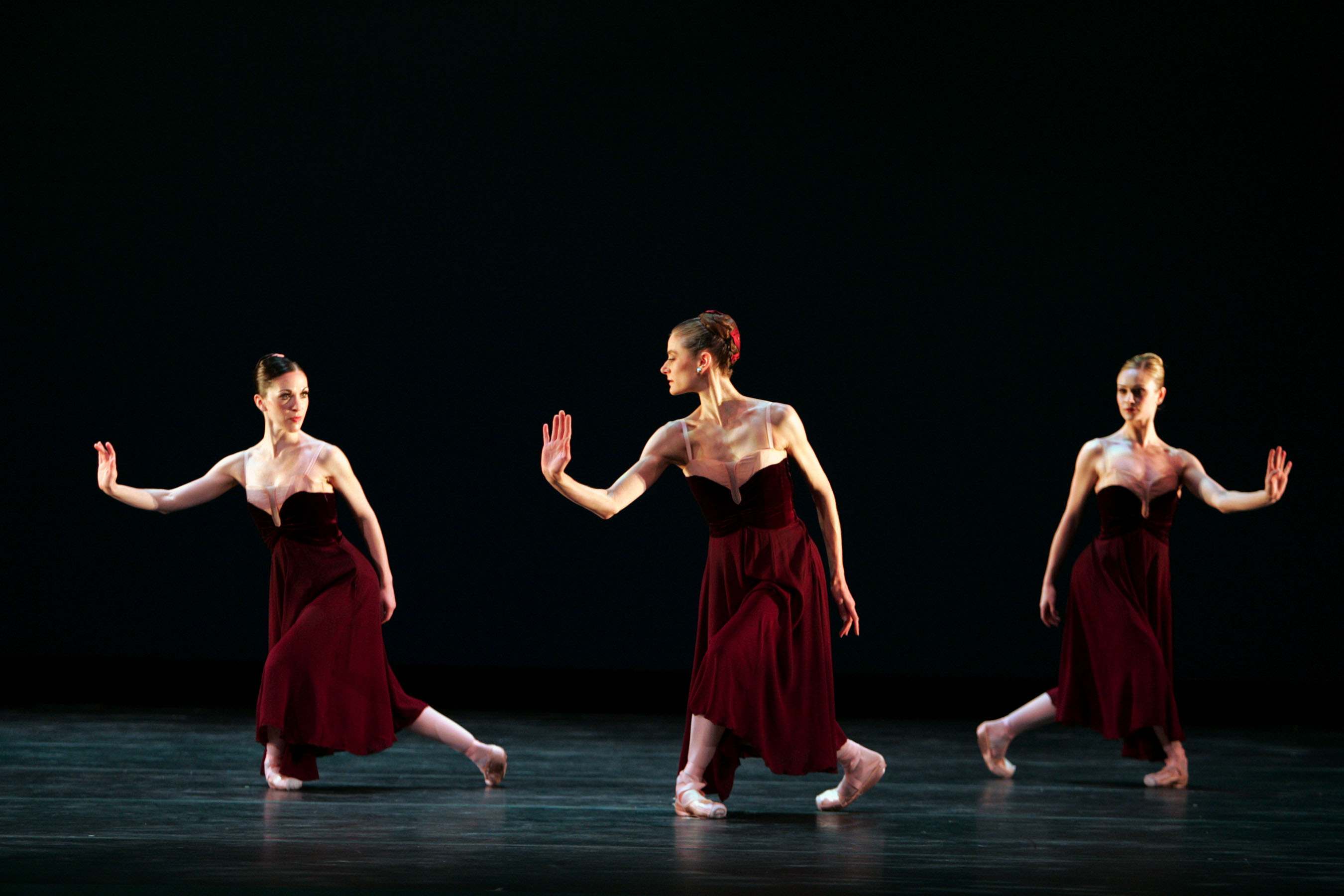
Details List
| Choreography | Mark Morris |
| Music | Ludwig van Beethoven - Trio V in D for violin, cello, and piano, Op. 70 no. 1 |
| Lighting Design | James F. Ingalls |
| Costume Design | Martin Pakledinaz |
| Instrumentation | violin, cello, piano |
| Number of Dancers | 14 |
| Runtime | 21 minutes |
Details
Program notes by Cheryl A. Ossola (View more on San Francisco Ballet’s website)
Twenty years ago, Mark Morris created his first work for San Francisco Ballet, Maelstrom. A prolific, primarily modern-dance choreographer with his own troupe, Mark Morris Dance Group, Morris had done a handful of ballets (for companies such as American Ballet Theatre and the Joffrey, Paris Opera, and Boston Ballets) by the time Maelstrom premiered in 1994. Since then, he has created works for several other ballet companies, but it is with SF Ballet that he has developed a long-term relationship.
Morris has created eight ballets, including the full-length Sylvia, for SF Ballet. For each one, he has had Ballet Master Betsy Erickson at his side, watching and documenting rehearsals when the ballets are made and rehearsing them in subsequent seasons. For Maelstrom, Morris spent the first few days of rehearsals doing movement studies “to see how the dancers moved, how they listened, how they responded,” Erickson says. “I felt like Maelstrom was quite an exploration for him—what you can do on pointe, and partnering in the more balletic sense.” One thing he knew when he arrived, she says, was that he wanted “clean lines of the arms, no flapping wrists.”
If Morris had to adapt to working with the Company, so did the dancers and Erickson have to adjust to the choreographer’s approach. “It took a bit for all of us to get used to how he works musically, which is so phenomenal,” Erickson says. “When you work with a piece over time, you start to see how he approaches the music, and the thematic material he builds [choreographically] with the thematic material of the music, and how he alters or augments it. It might start out with something big and diminish, or it might start very small and become more elaborate. It was a wonderful thing, a little miracle all the time, to discover how he was hearing the music.”
That music is Ludwig van Beethoven’s “Ghost” Piano Trio (so called because of its dark, mournful second movement), composed in 1809, after he had left behind much of the influence of Haydn and Mozart and opted for a more expressive style. Beethoven composed the trio while he was contemplating writing an opera based on Macbeth; his notes indicate that the themes in the trio’s second movement came from his sketches for the witches scene in the opera. More than 30 years later, one of Beethoven’s students, Carl Czerny, wrote that the movement reminded him of the ghost of Hamlet’s father—thus the nickname “Ghost.”
Morris is a stickler for using a musical score in its entirety, repeats included, which can be opportunities for choreographic exploration. Erickson describes a section that has a kind of waltz step that’s done three different ways. “It’s the same basic movement and it goes in the same direction,” she says, “but one goes very slow, one goes almost without rhythm in a very slippery way, and another one is very punctuated and sharp. It’s the same movement and the same music, but it’s three different interpretations.”
The maelstrom in this ballet, if there is one, seems to be more about tension than a tempest. “I certainly see a buildup and I see a release,” Erickson says. “I don’t know if we really see the heart of the storm. There’s a swirling movement, but there are also times when something is disappearing or diminishing, like down a drain. It happens several times—someone will go upstage and disappear into the darkness.”
The third movement, Erickson says, is “joyous and dancey and fun. Maelstrom has so many beautiful movement characteristics in it—swirls and beautiful partnering and wonderful imagery.” Her favorite part? “The second movement, because it’s so mysterious,” she says. “It has some slow lifting in it, which is really difficult. But when it’s done well, it takes your breath away.”
Maelstrom has also been performed by Pittsburgh Ballet Theater and Boston Ballet.

